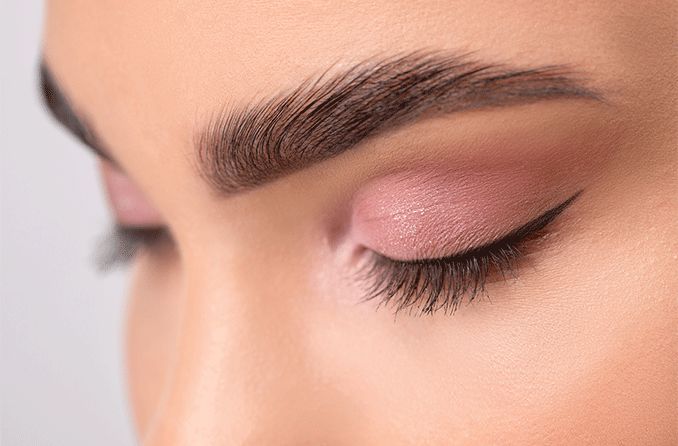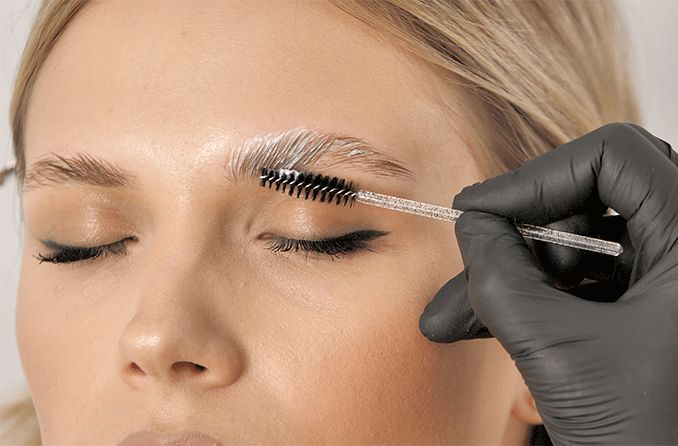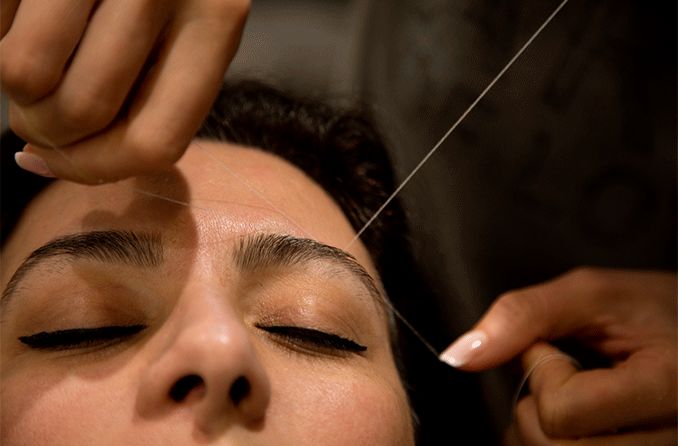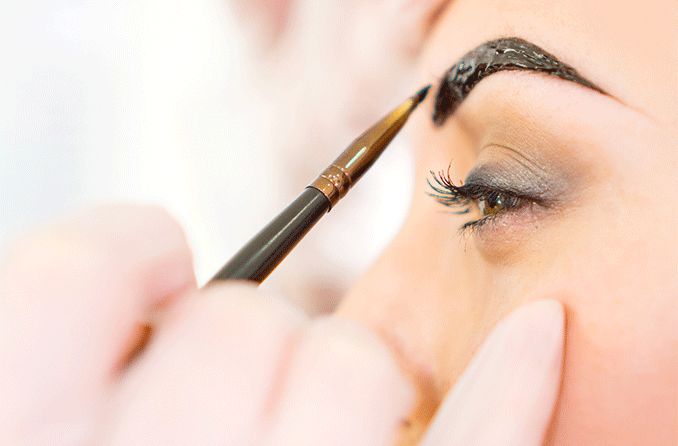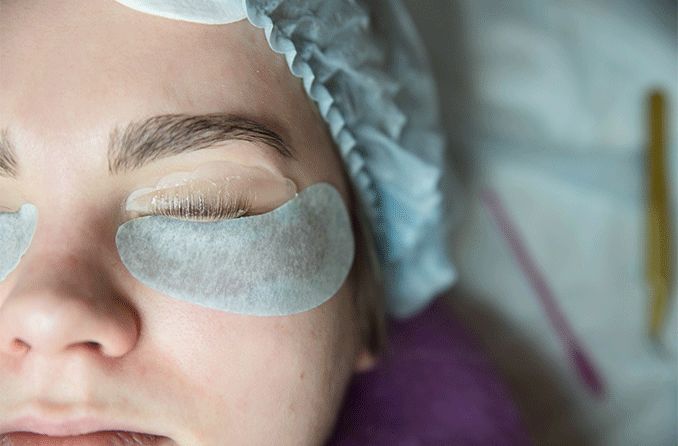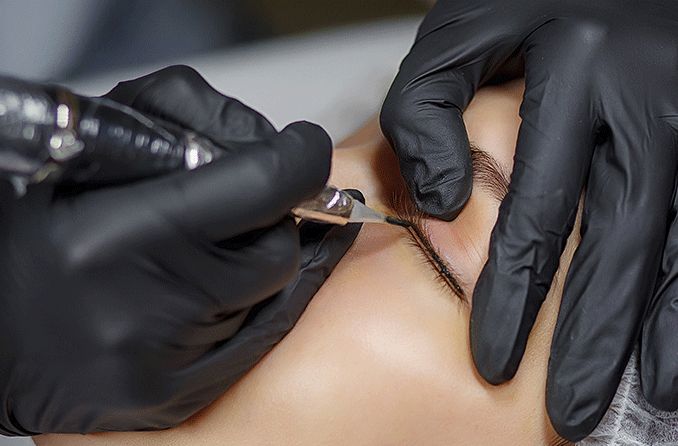What is microblading the eyebrows?
Microblading is a cosmetic procedure that involves using a semi-permanent tattoo technique to achieve the appearance of fuller and precisely shaped eyebrows.
Unlike a tattoo, microblading uses a manual, handheld tool with tiny needles at the end to create the shape of a small blade (a microblade).
How it works
Before the procedure, a licensed technician will hold a consultation during which you’ll discuss how natural or bold you want your eyebrows to look. They will analyze your natural eyebrow color, your skin tone and other facial features to determine what will best complement your face.
The technician will use an eyebrow pencil to create an outline of your desired brow shape. After cleaning and applying a numbing cream to the eyebrow area, the technician will dip the microblading tool into the pigment and make tiny cuts resembling eyebrow hairs within the natural brow.
Once the technician finishes making strokes in the first eyebrow, they will smear the pigment over the entire eyebrow and let it set while they repeat the process on the second eyebrow.
When the entire process is done, the technician will remove the smeared pigment to reveal thicker, fuller, more precisely shaped eyebrows.
Healing time after microblading
It usually takes seven to 14 days for the pigment to settle into the outermost layer of skin and for that skin to heal. However, deeper layers of the epidermis continue rebuilding for several weeks after the procedure.
During the healing process, your technician will give you several instructions on how to care for your eyebrows to get the best results, which may include:
- Avoid picking at or scratching the eyebrows as the skin scabs and flakes off. While the area may be itchy, scratching can make it susceptible to bacteria and infection.
- Keep the eyebrows dry, which means limiting exposure to sweat and water from the shower or swimming pool.
- Avoid sun exposure.
- Keep makeup, serums, moisturizers and other cosmetics off the eyebrows.
- Avoid facial scrubs or peels.
SEE RELATED: What is eyebrow threading?
How long does microblading last?
While microblading is similar to a tattoo, the results are not permanent like a tattoo is. The fine lines made to create realistic results cause the pigment to fade over 1 to 3 years.
The longevity of your results depends on several factors, including the technician who did your procedure, your skin type, your lifestyle and how well you follow the post-procedural recommendations.
If you notice the pigment in your eyebrows fading (usually after a year), you can schedule a touch-up appointment. Touch-up sessions will add pigment to the outline of the brows you’ve already had microbladed. These sessions help the microblading stay fresh and are less expensive than a full session.
Cost to microblade your eyebrows
If you’re interested in having your eyebrows microbladed, you should probably start budgeting for it now. While the average price of the procedure is a little under $600, the cost depends on several factors, such as location, experience, demand, competition and the popularity of the technician.
Some places may offer microblading for as little as $250, or as much as $2,000, which further emphasizes the importance of researching before you show up at the salon. We all love a good deal, but a lower price tag may cost you in the long run.
Touch-up sessions are recommended and sometimes mandatory at certain salons. They often include the cost of the first touch up in the total that you pay for the first appointment.
The cost of a touch-up service varies, though it is less expensive than having the full microblading procedure. Some salons have a flat-rate of $50-$100 per touch-up session, while others may charge $200-$300 or more.
SEE RELATED: Eyebrow piercing
Pros of microblading your eyebrows
As the art of microblading has improved, adults of all ages have been turning to the procedure to enhance the appearance of their eyebrows. While the advantages of microblading eyebrows vary from person to person, the most common benefits include:
- Immediate results. When you walk out of your microblading appointment, you will leave with a noticeable difference in your eyebrows. While your eyebrows may appear darker or a little swollen during the healing time, you will see results immediately.
- Convenience. Microblading can replace the need for drawing on or filling in the eyebrows, which will save you time.
- Improved appearance. Though what is considered attractive is subjective and varies from person to person, aesthetic analysis has shown that the eyebrows are “of primary importance in facial expression and beauty.” Microblading can intensify or create eyebrows that frame your face and enhance your natural beauty.
- Painless procedure. Other methods of eyebrow tattooing can be painful, which makes many hesitant to get it done. However, before the procedure begins, your technician applies a numbing agent that eliminates any pain during the microblading process.
- Low maintenance. Once you’ve had your eyebrows microbladed and they’ve healed properly, you require no other treatment until the pigment fades, or you want a touch up.
Cons of microblading your eyebrows
Overall, eyebrow microblading poses similar risks associated with getting a tattoo. Like with any cosmetic procedure, you want to take the time to do thorough research before microblading your eyebrows.
Reading customer reviews, asking about sanitation and safety precautions, researching technician credentials, and viewing portfolios of their work can ensure your eyebrows and face are in expert hands. However, even with proper planning, potential risks with eyebrow microblading include:
- Allergic reaction. It’s possible to experience an allergic reaction to the pigment used in microblading. Though it’s rare, it happens most commonly with red-colored ink. If you’re allergic to the ink, an itchy rash will develop during or after the procedure. Antihistamines or steroids can help with the reaction.
- Infection. If your technician does not follow proper sanitation during the procedure, it can lead to a bacterial infection, such as staph (staphylococcus). Viral infections, including HIV, hepatitis and herpes can also be transmitted. It’s possible for infection to occur even when your technician uses proper sanitation methods. For example, the ink can be contaminated with mold or bacteria, even though the packaging is sealed. Infections can be treated with antivirals, antifungals or antibiotics depending on the type and severity.
- Poor outcome. You may read through hundreds of reviews and see several portfolio images and still end up with eyebrows you’re not happy with. Bad microblading eyebrows are unfortunately common and — as stated earlier — are semi permanent. While laser treatments are available to reverse poor results, they can be painful and expensive.
- Keloids. Because microblading is essentially making a bunch of tiny cuts into the face, it’s possible for scarring to occur, especially if you have an inexperienced technician who cuts too deeply. Keloids are scars that grow bigger than normal and are raised. While it’s rare for them to appear on the face, if you are prone to developing them elsewhere, it’s possible for them to grow around the microblading incisions.
- Granulomas. Injecting pigment into the skin can cause your immune system to create inflammatory knots, called granulomas, around the affected area as a means of protection. Granulomas don’t always appear right away; they may take months or years after the procedure before they develop. Antibiotics and steroids can help treat this kind of reaction.
- Reaction to an MRI. Though this is a rare occurrence, it’s possible for tattooed skin to swell, burn or become irritated during magnetic resonance imaging (MRI). After the MRI, the skin will calm down and return to normal. However, it’s best to inform your doctor of any microblading or tattoos you have before an MRI.
SEE RELATED: Eyebrow tinting
Who should avoid microblading their eyebrows?
You are not a suitable candidate for eyebrow microblading if:
- You are pregnant or nursing
- You are under 18 years of age
- You have had an organ transplant
- You have a viral infection or disease
- You have major heart problems or require a pacemaker
- You have a preexisting skin condition on or near the eyebrows
- You are allergic to metal or certain dyes
- You have an autoimmune condition, such as Lupus or Multiple Sclerosis
- You are currently on Accutane or have been on it within the past 12 months
There are other characteristics that may affect your eligibility for microblading, though salons treat each client on a case-by-case basis. If you have any concerns about your eligibility, it’s best to consult with the salon technician.
Alternatives to microblading your eyebrows
If microblading is a little too expensive or “permanent” for your taste, there are some alternatives to help you achieve fuller-looking brows without the cuts or the cost.
- Brow lamination. This is a non-invasive treatment that uses chemicals to set and direct eyebrow hairs to a more desirable shape, similar to perming the hair. Brow lamination is a fast, pain-free option that lasts between six and eight weeks.
- Microblading eyebrow pen. Many cosmetic companies have responded to the microblading trend by creating eyebrow pens that produce brush strokes similar to the ones made during a microblading session. While they’re a less expensive, less invasive option to microblading, the pens may wash off when showering, swimming or sweating.
Eyebrow extensions. Similar to lash extensions, eyebrow extensions consist of attaching fibers to the eyebrow to make it appear thicker or longer. A technician uses fine, natural-looking fibers that resemble eyebrow hair, and attach them to existing eyebrow hairs or directly to the skin using a medical-grade adhesive. Results can last up to two weeks.
READ NEXT: Eye tattoos
